In the microscopic realm of a petri dish, hope takes shape as regenerative medicine embarks on a profound quest for cures. This revolutionary field, nestled at the intersection of biology and technology, holds the promise of transforming the landscape of healthcare. At its core, regenerative medicine seeks to harness the body’s innate ability to heal and regenerate damaged tissues, offering a beacon of hope for those grappling with debilitating diseases and injuries. Stem cells, the unsung heroes of this scientific odyssey, take center stage in this miniature theater of healing. Within the confines of a petri dish, researchers meticulously cultivate and manipulate stem cells, the versatile building blocks of life. These undifferentiated cells possess the remarkable capacity to develop into various specialized cell types, making them the architects of regeneration. Scientists orchestrate this intricate dance of cellular transformation, coaxing stem cells to become heart cells, nerve cells, or even pancreatic cells.

This ability to guide cellular destiny represents a paradigm shift in medicine, holding the potential to replace damaged or malfunctioning tissues with newly cultivated, healthy counterparts. One of the most promising frontiers within regenerative medicine lies in the development of personalized therapies. Researchers delve into the intricacies of a patient’s genetic makeup, tailoring treatments that align with individual needs regenerative medicine science program. This bespoke approach not only enhances the efficacy of interventions but also mitigates the risk of rejection, a hurdle traditionally associated with organ transplantation. The petri dish becomes a bespoke workshop, where each dish holds the key to unlocking personalized solutions for a myriad of medical conditions. The regenerative medicine quest extends beyond mere repair, venturing into uncharted territories of disease modification. By manipulating cellular processes at their root, scientists aim to alter the course of chronic diseases such as Alzheimer’s, Parkinson’s, and diabetes.
The petri dish becomes a crucible for innovation, where the fusion of biology and technology sparks hope for interventions that transcend the boundaries of conventional medicine. As regenerative medicine strides forward, it brings with it a sense of optimism for those facing previously insurmountable health challenges. The petri dish transforms into a symbol of resilience and progress, where breakthroughs materialize in the form of regrown tissues, repaired organs, and, ultimately, restored lives. While challenges persist, including ethical considerations and regulatory frameworks, the momentum within this field is unstoppable, fueled by the collective determination to redefine the boundaries of what is medically possible. In the confined space of a petri dish, hope germinates and spreads its tendrils across the vast expanse of medical discovery. Regenerative medicine’s relentless pursuit of cures, cultivated in these miniature ecosystems, offers a glimpse into a future where healing is not merely a reaction to illness but a proactive orchestration of renewal.
